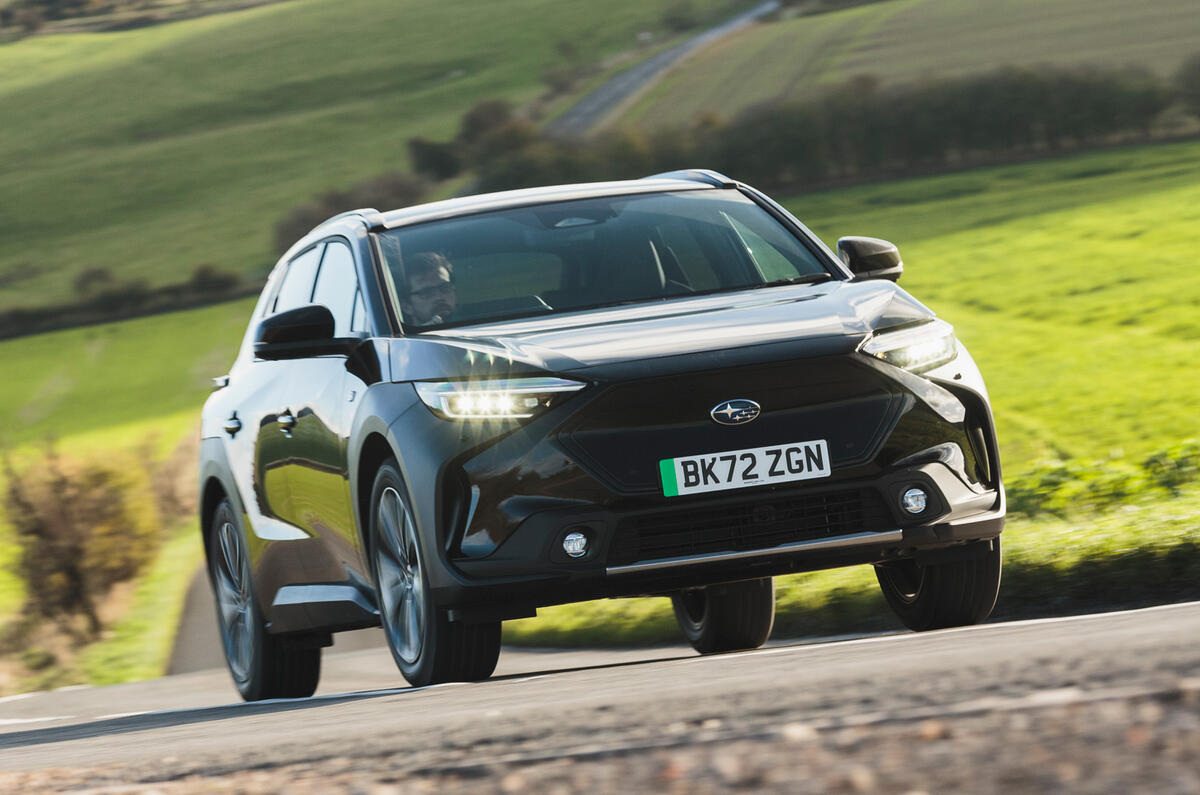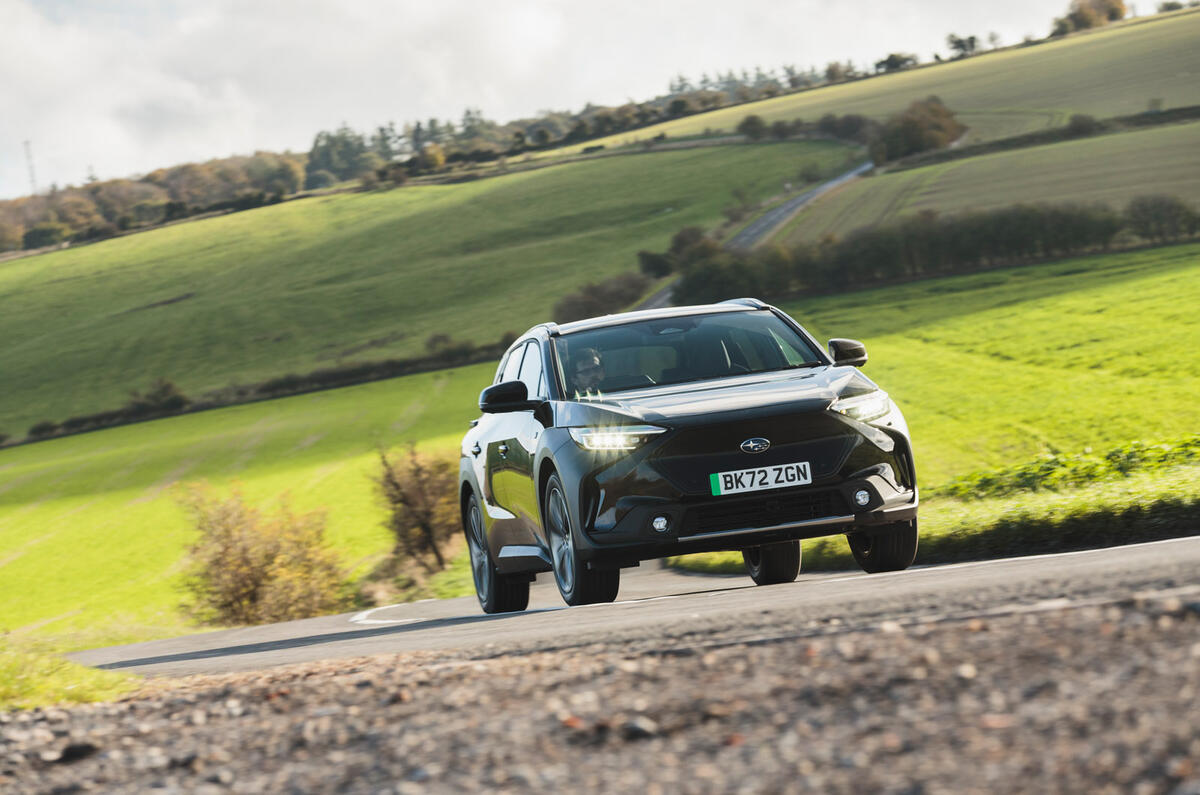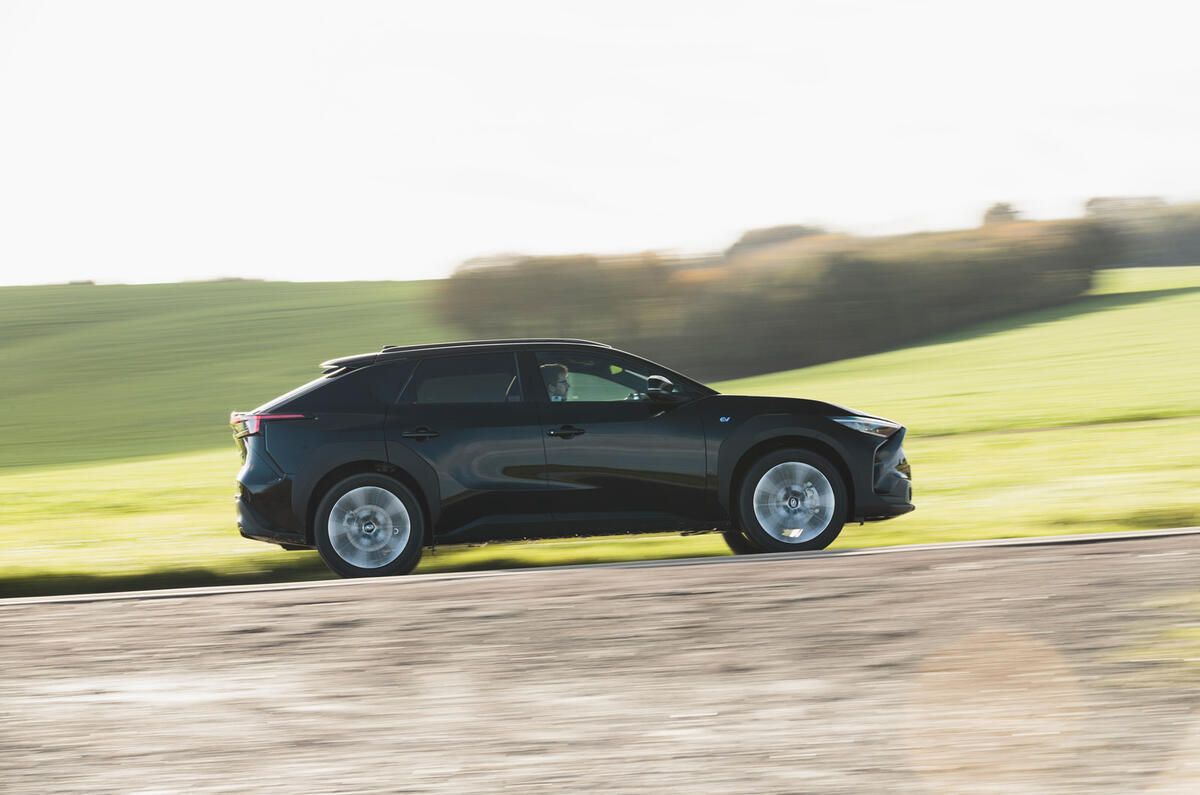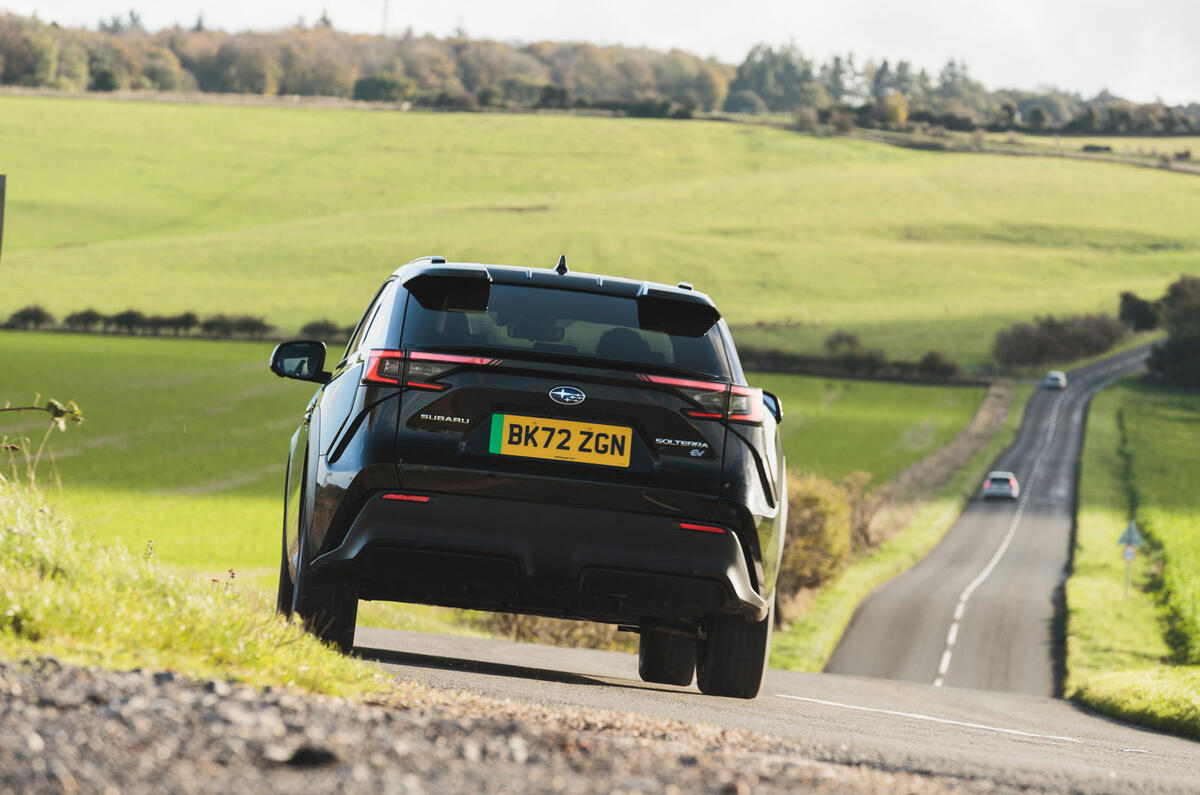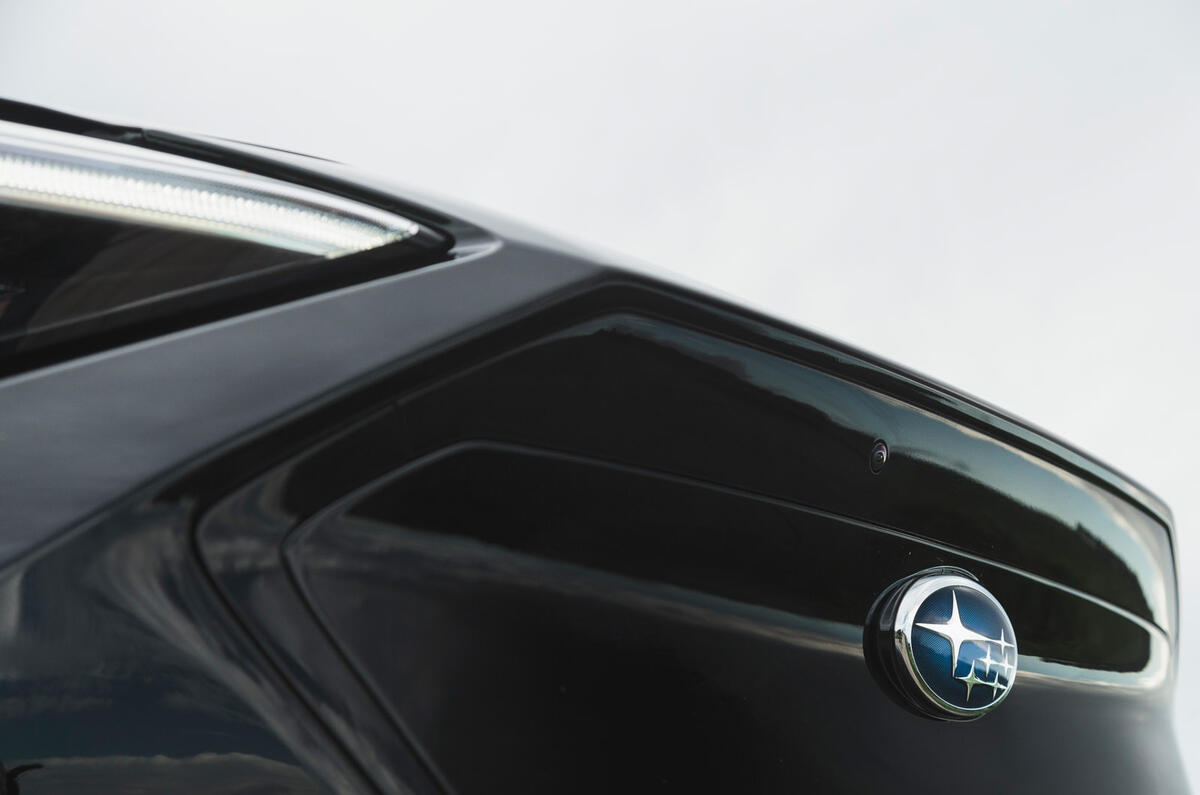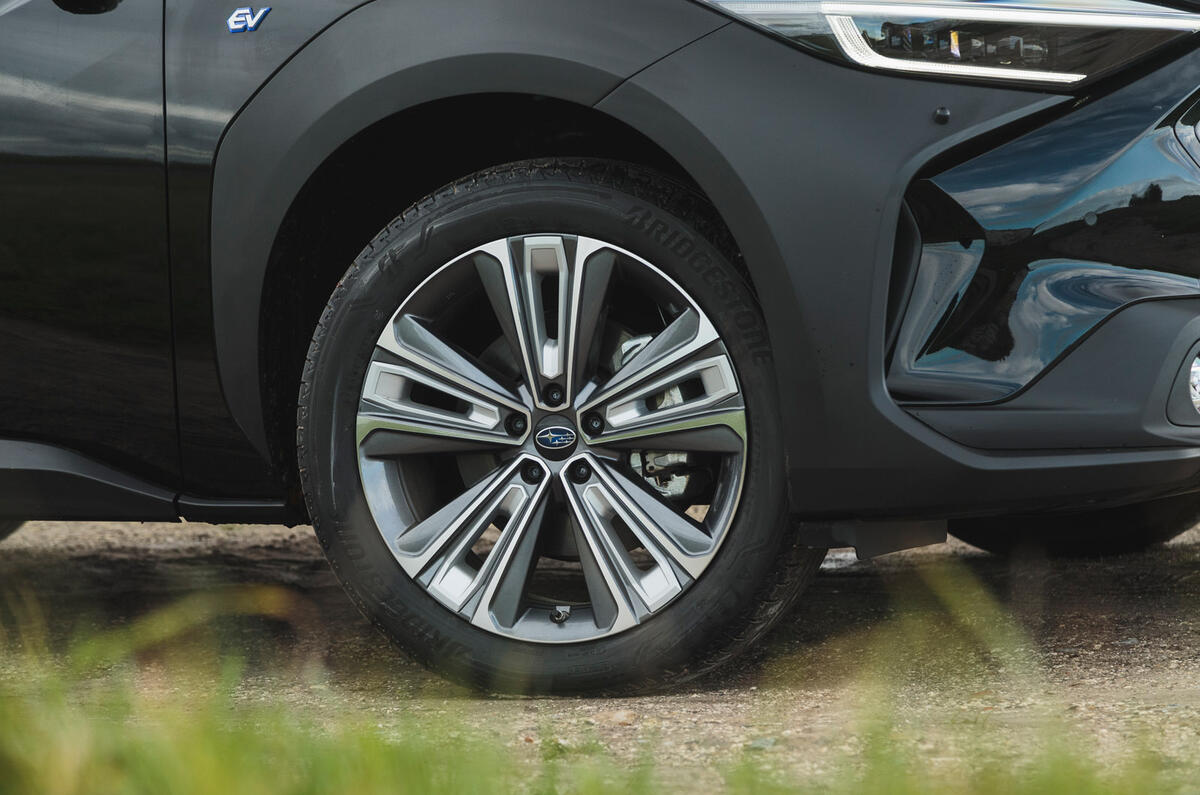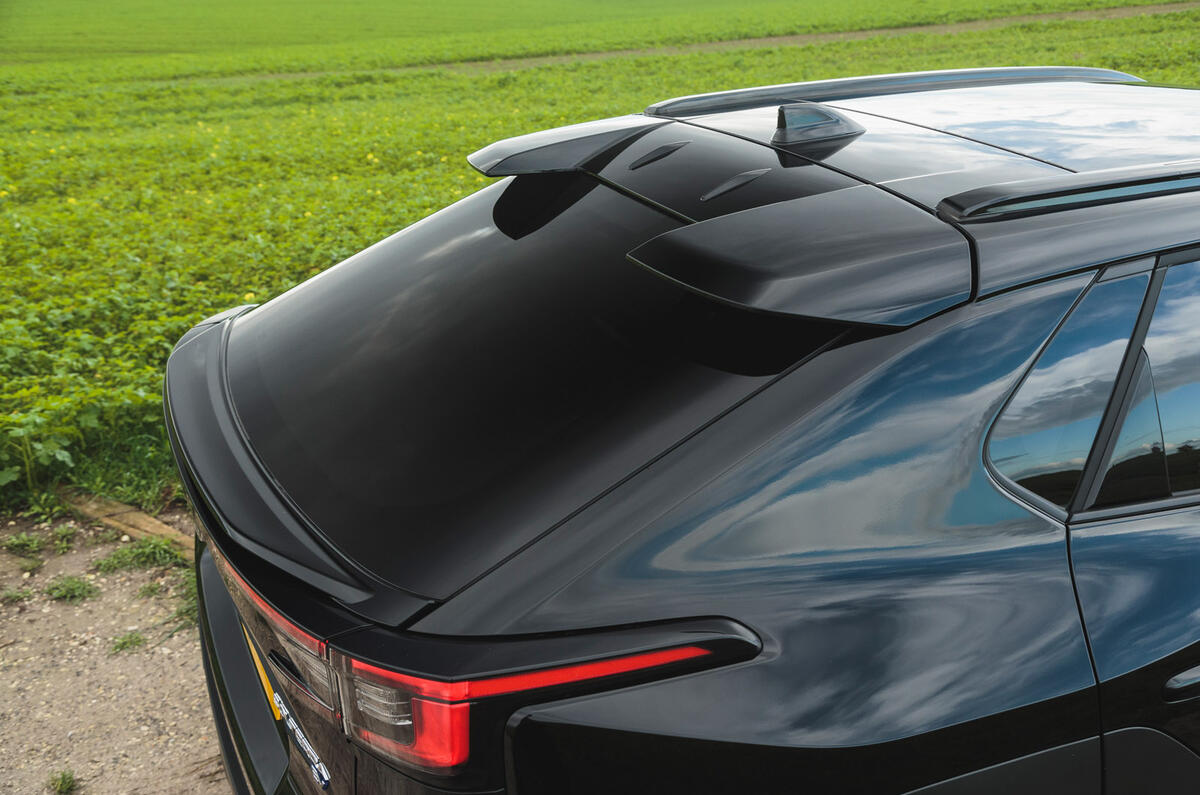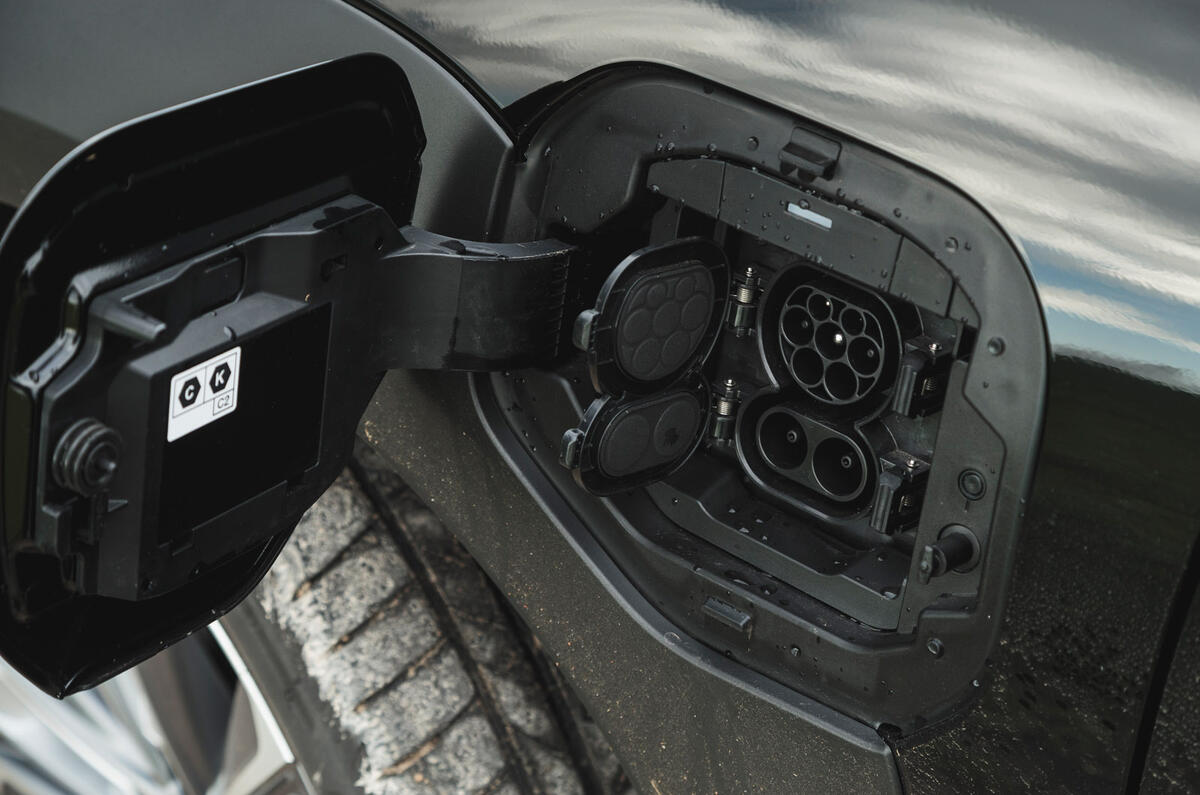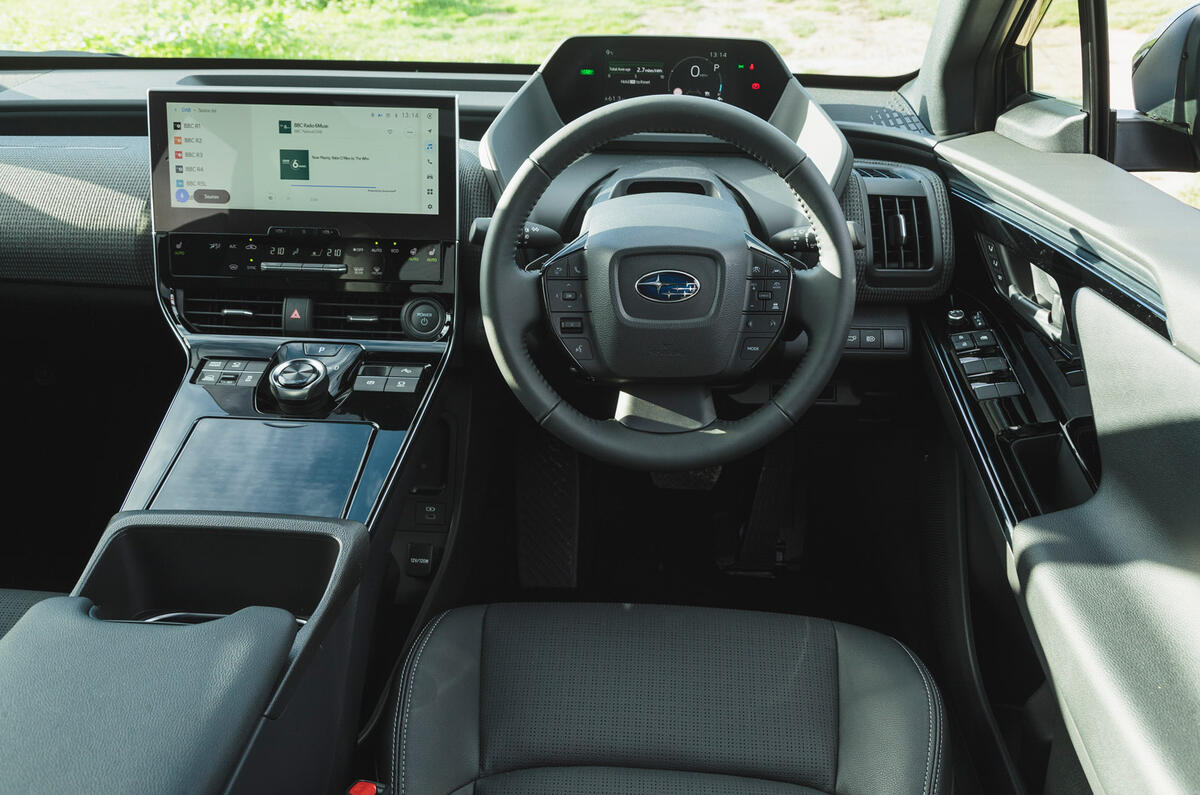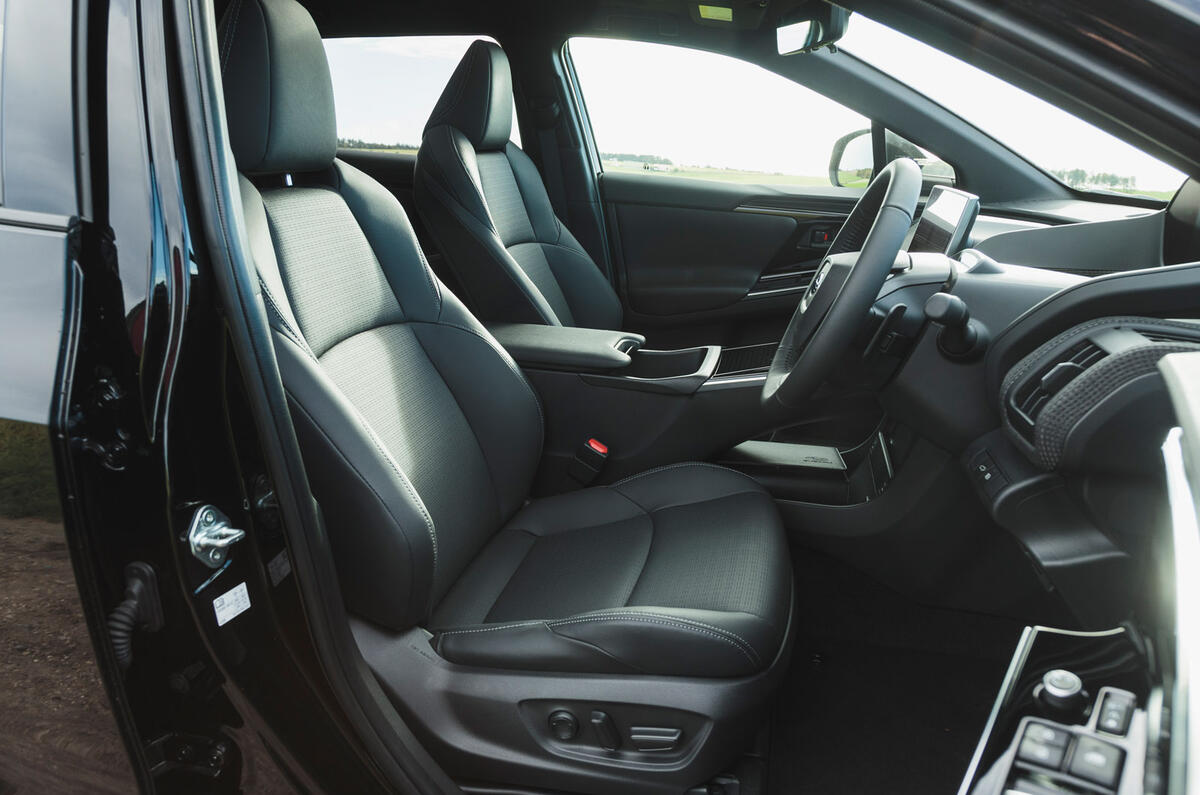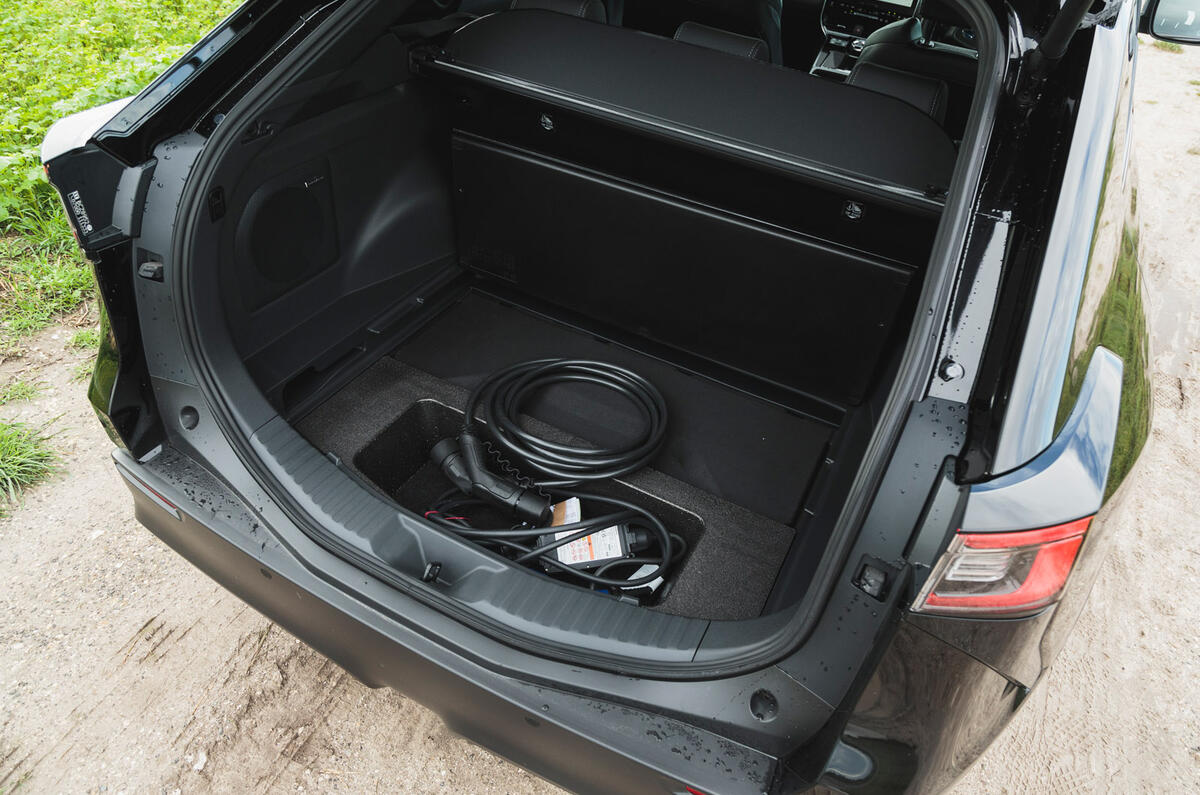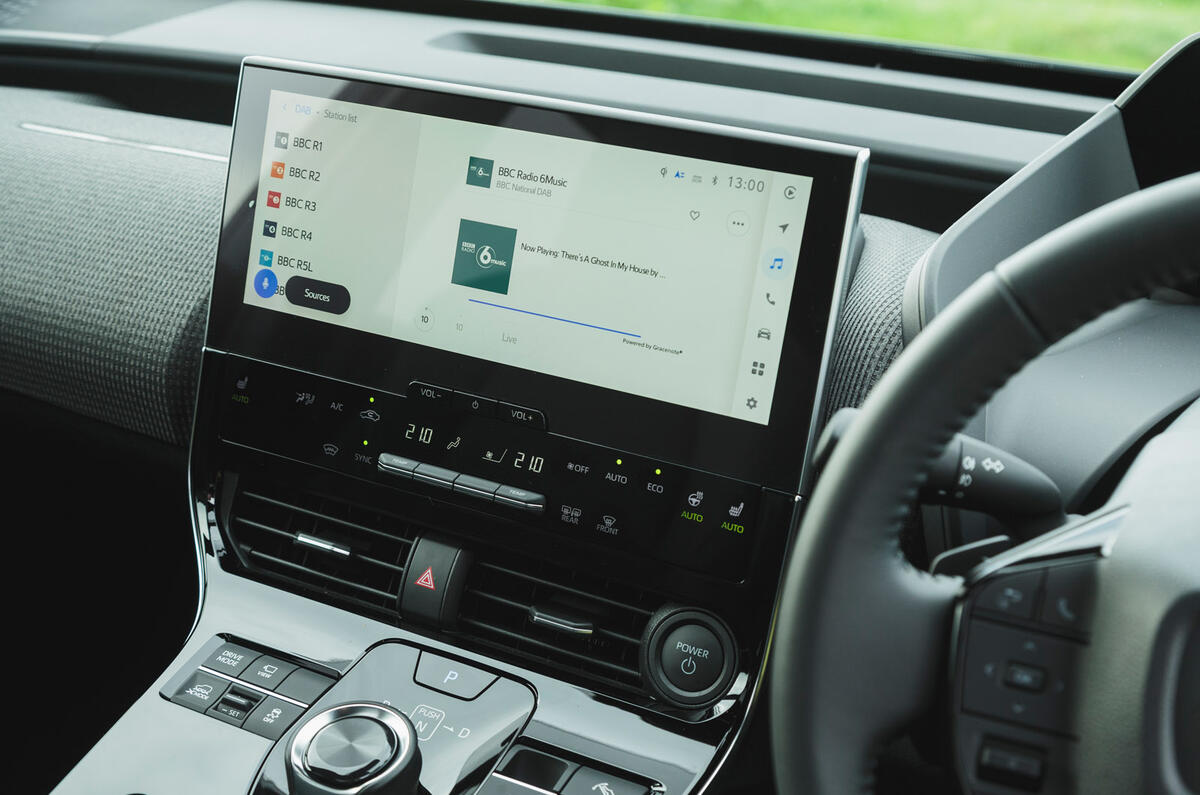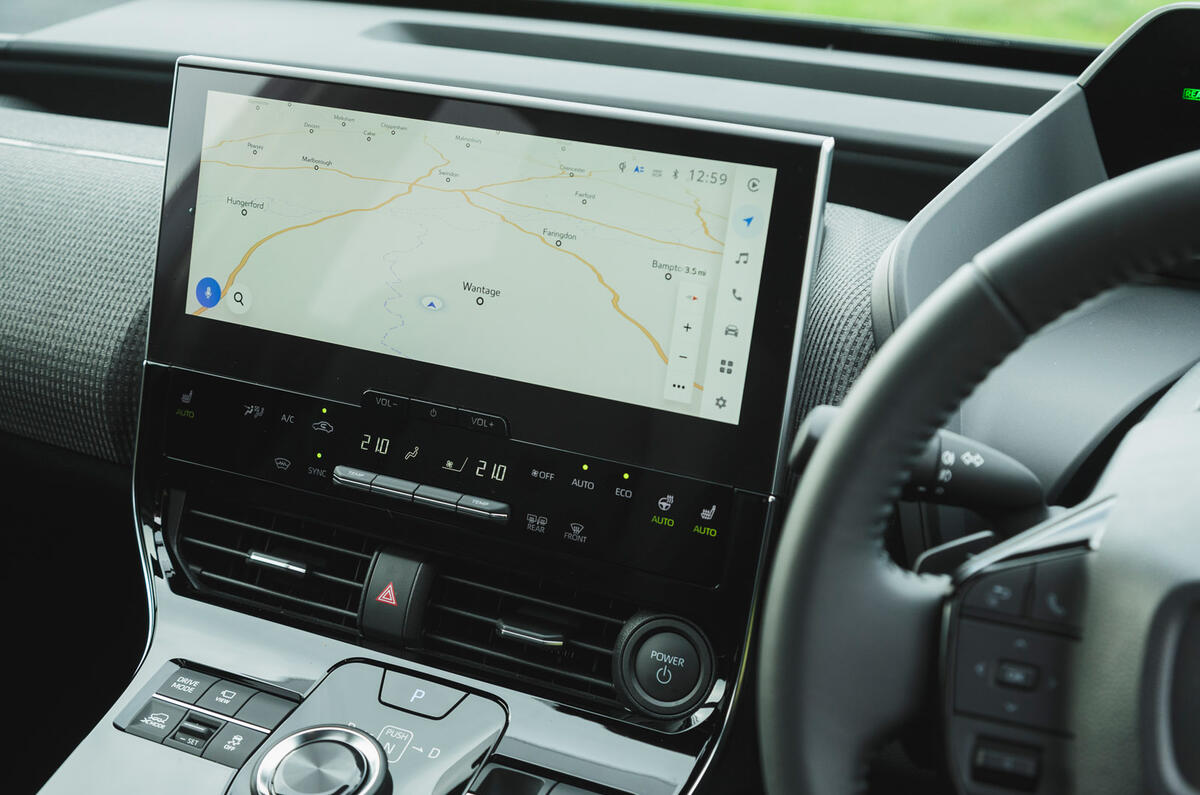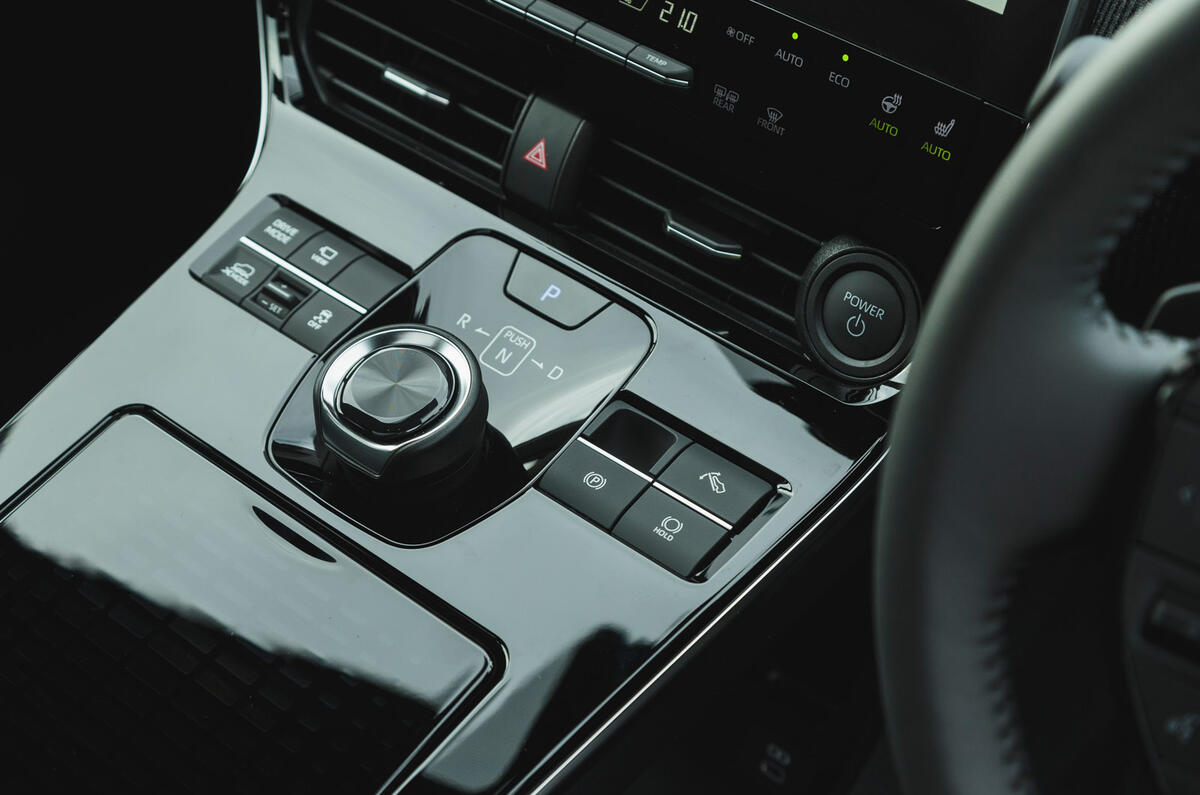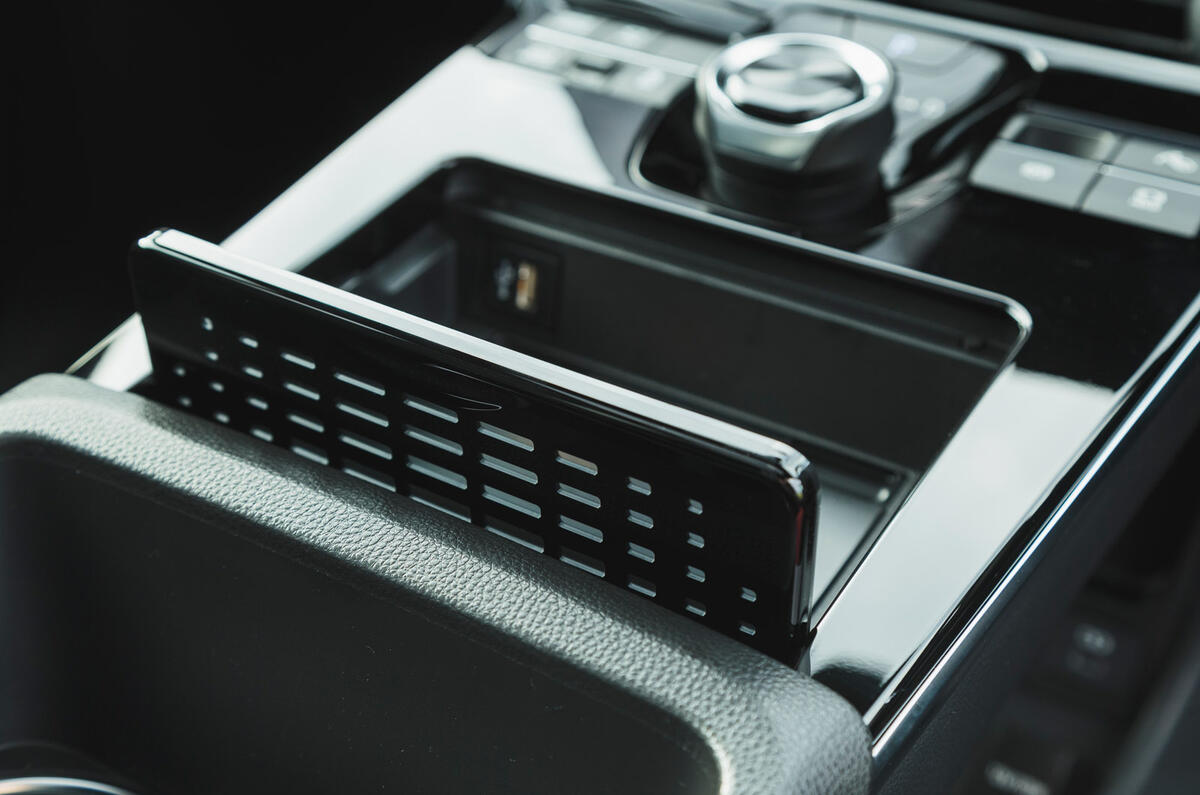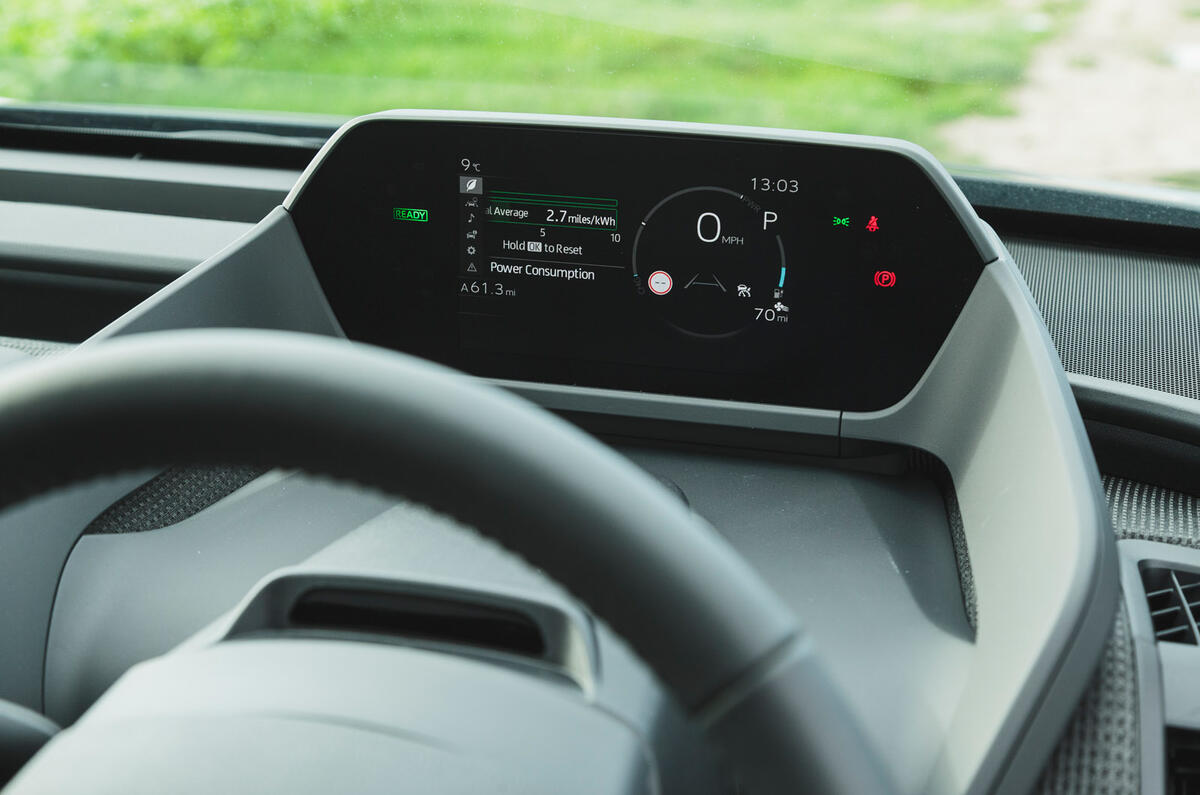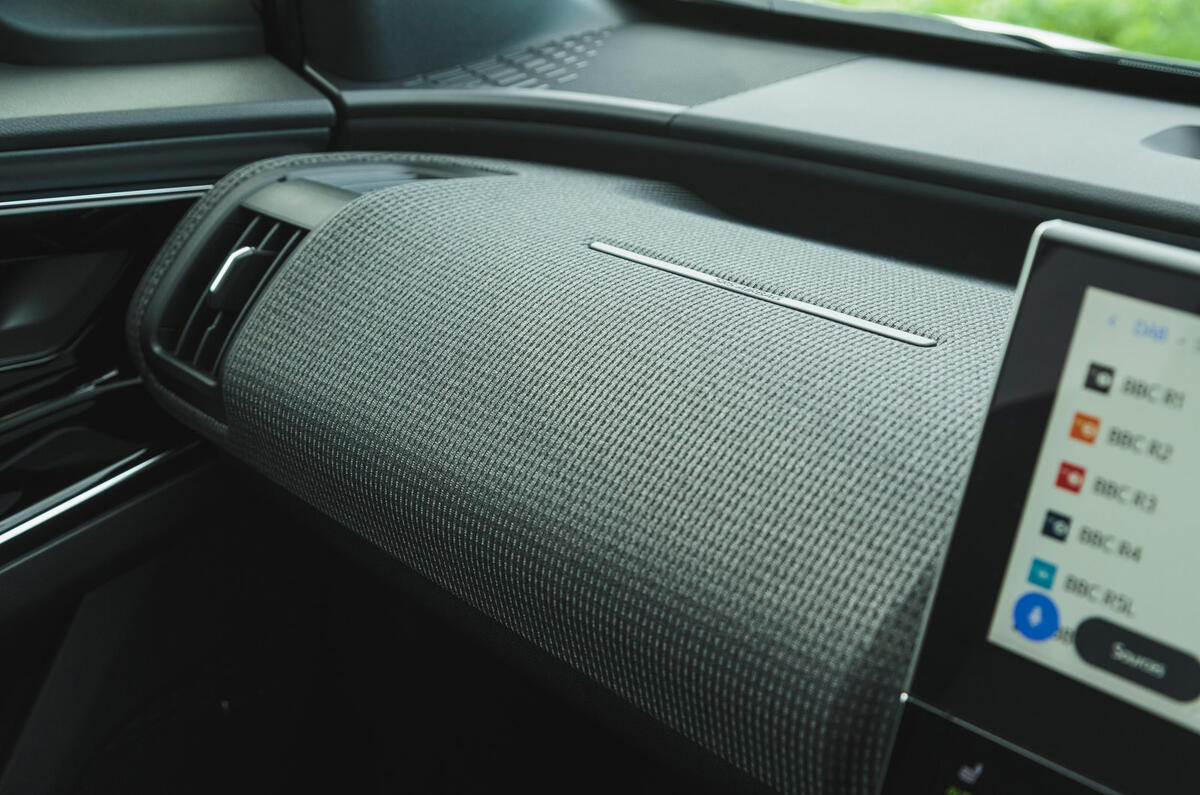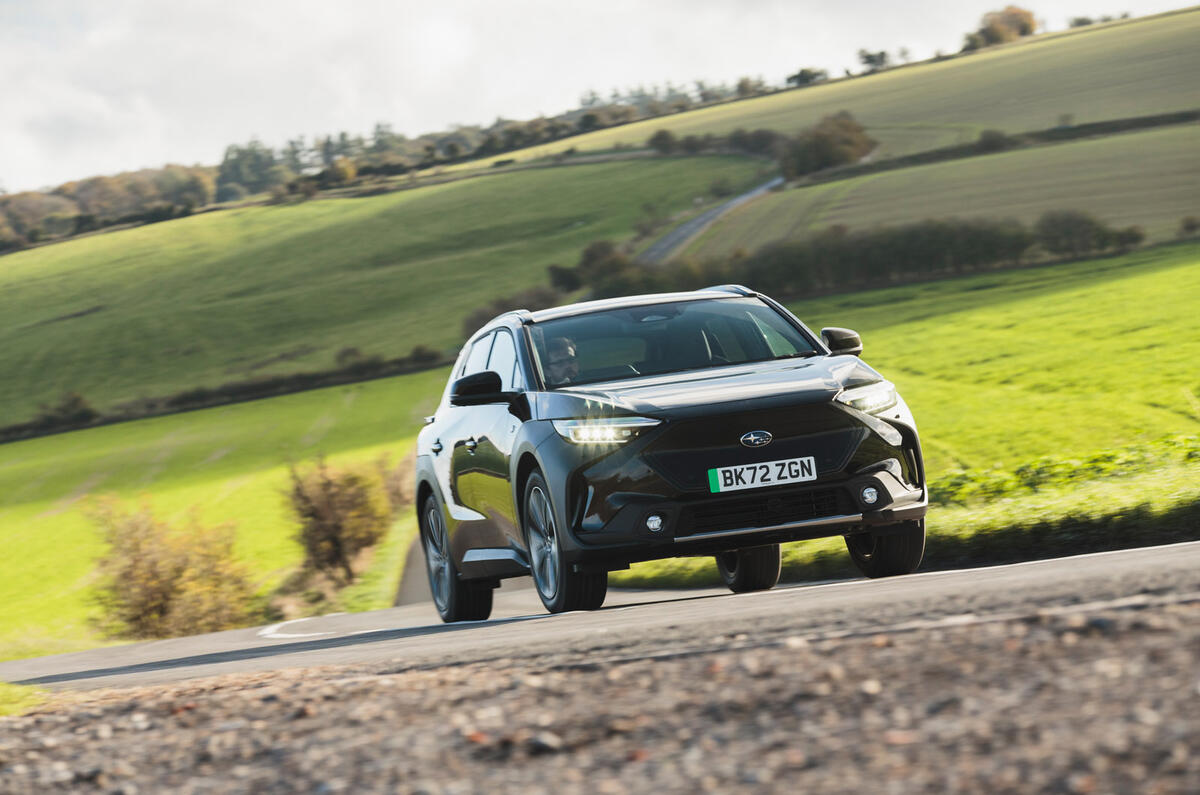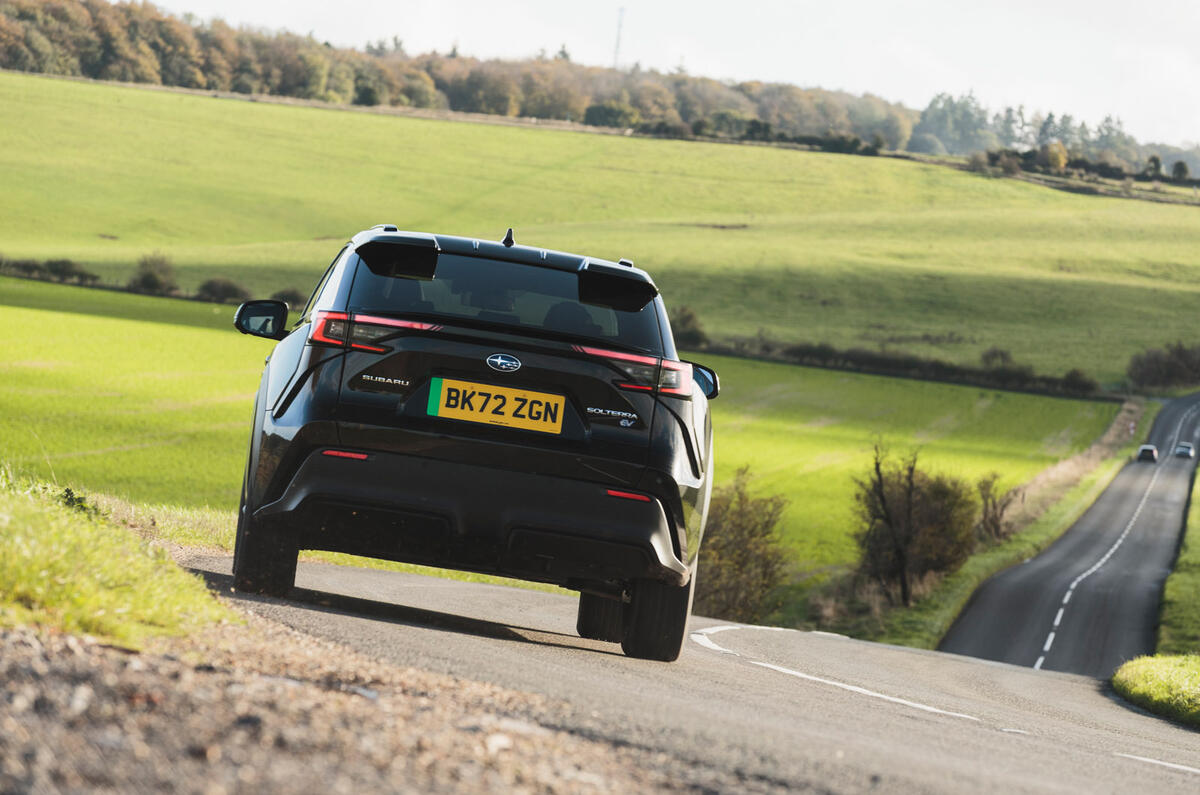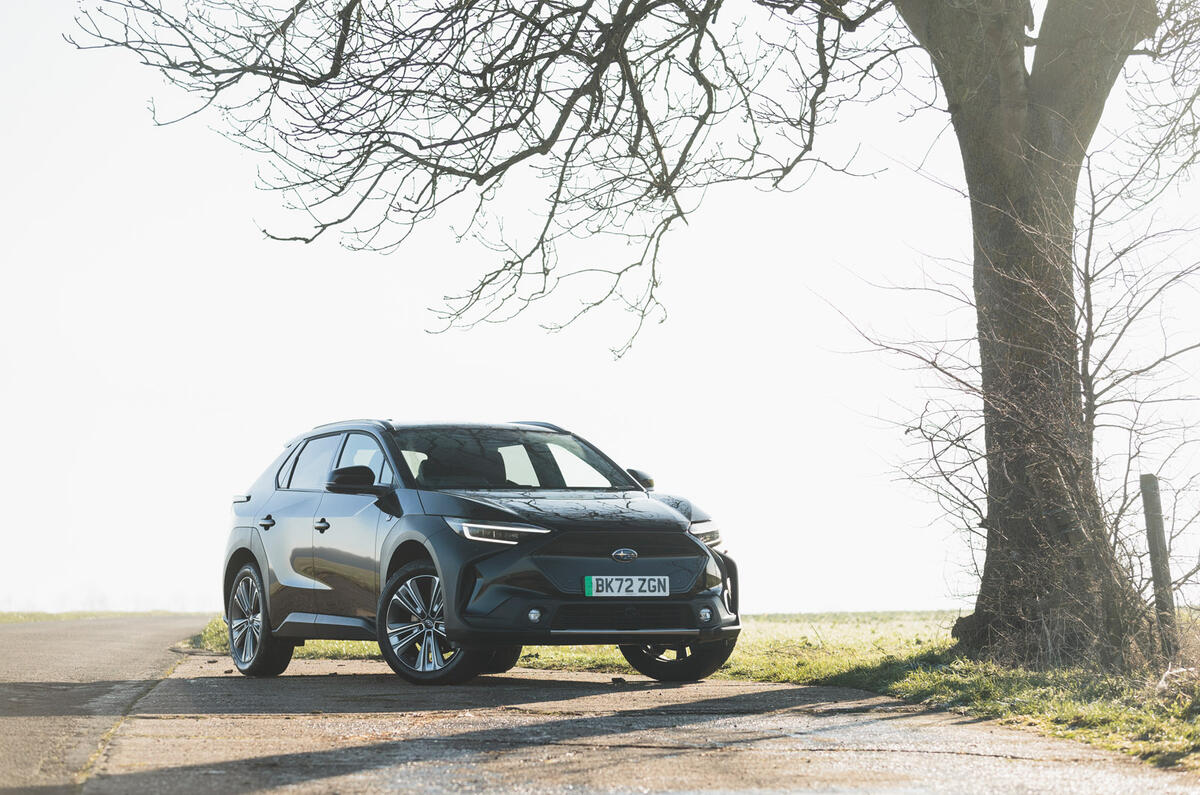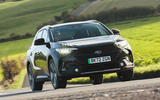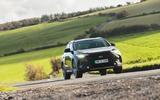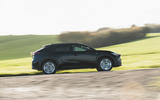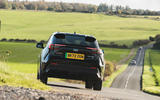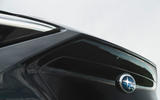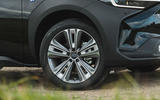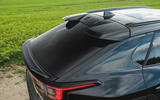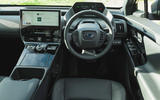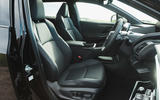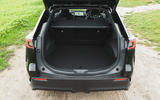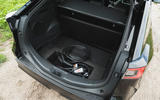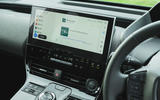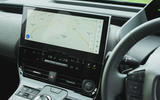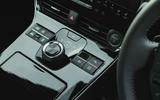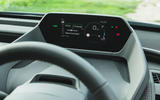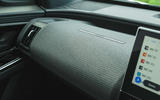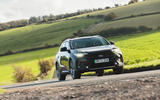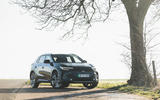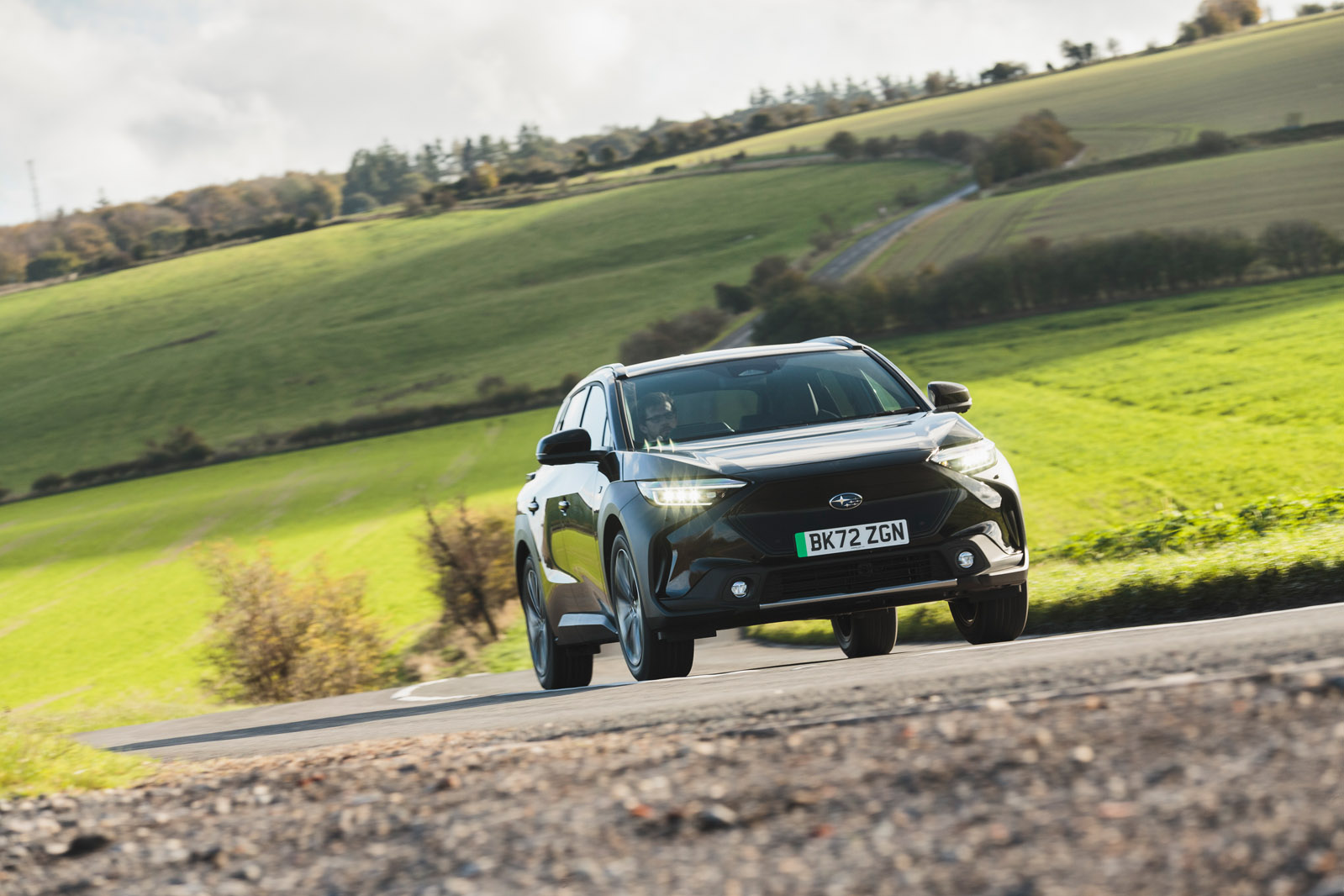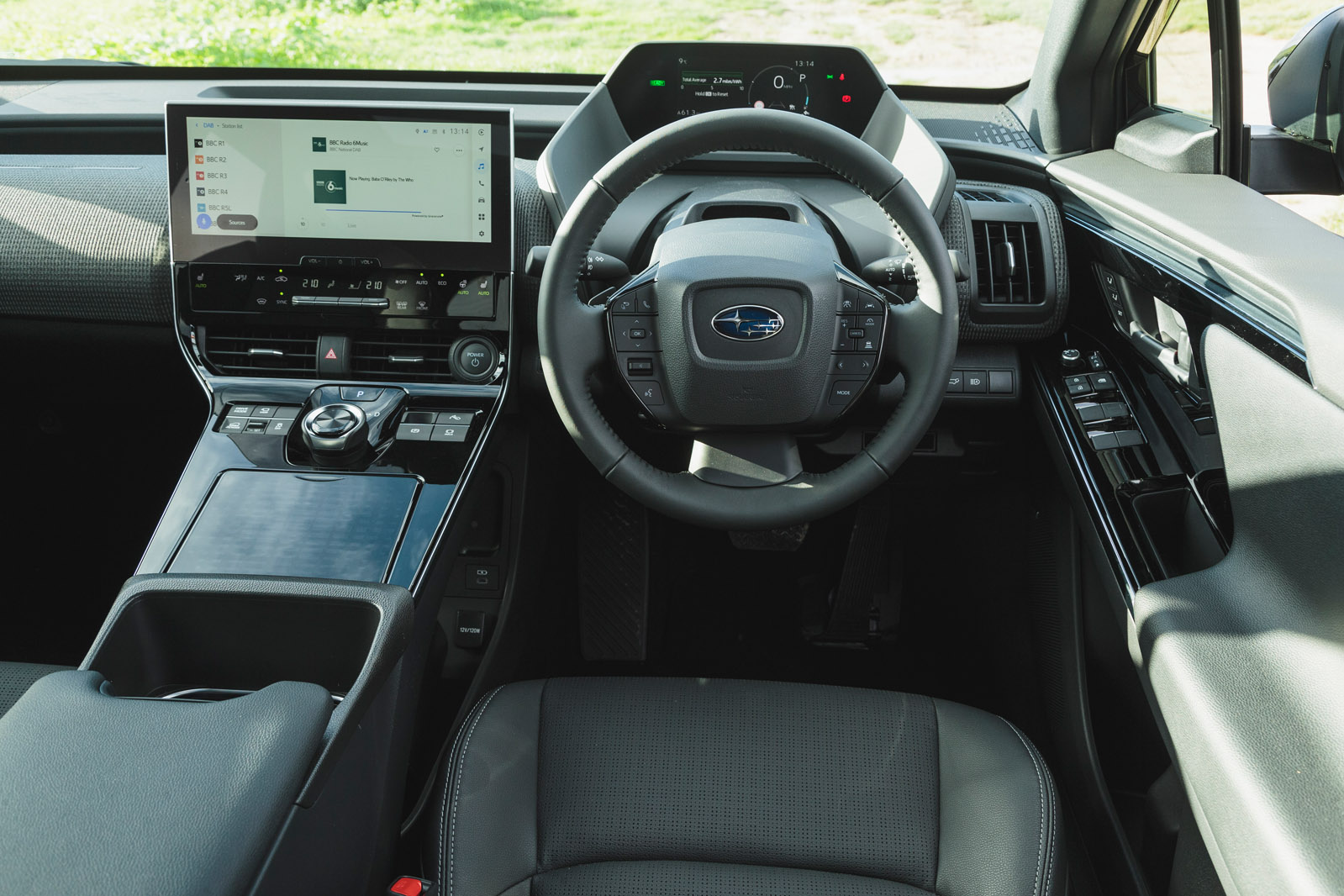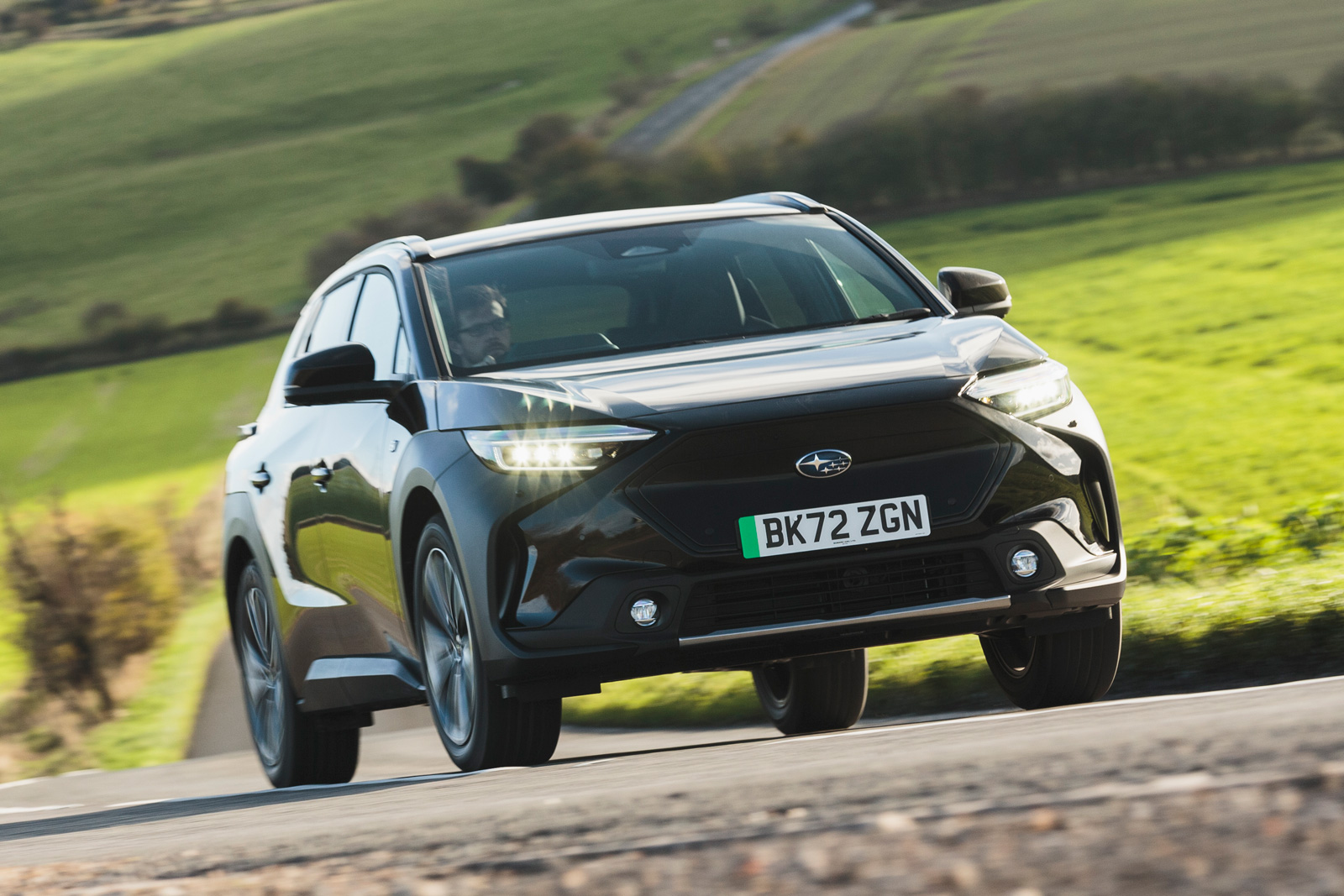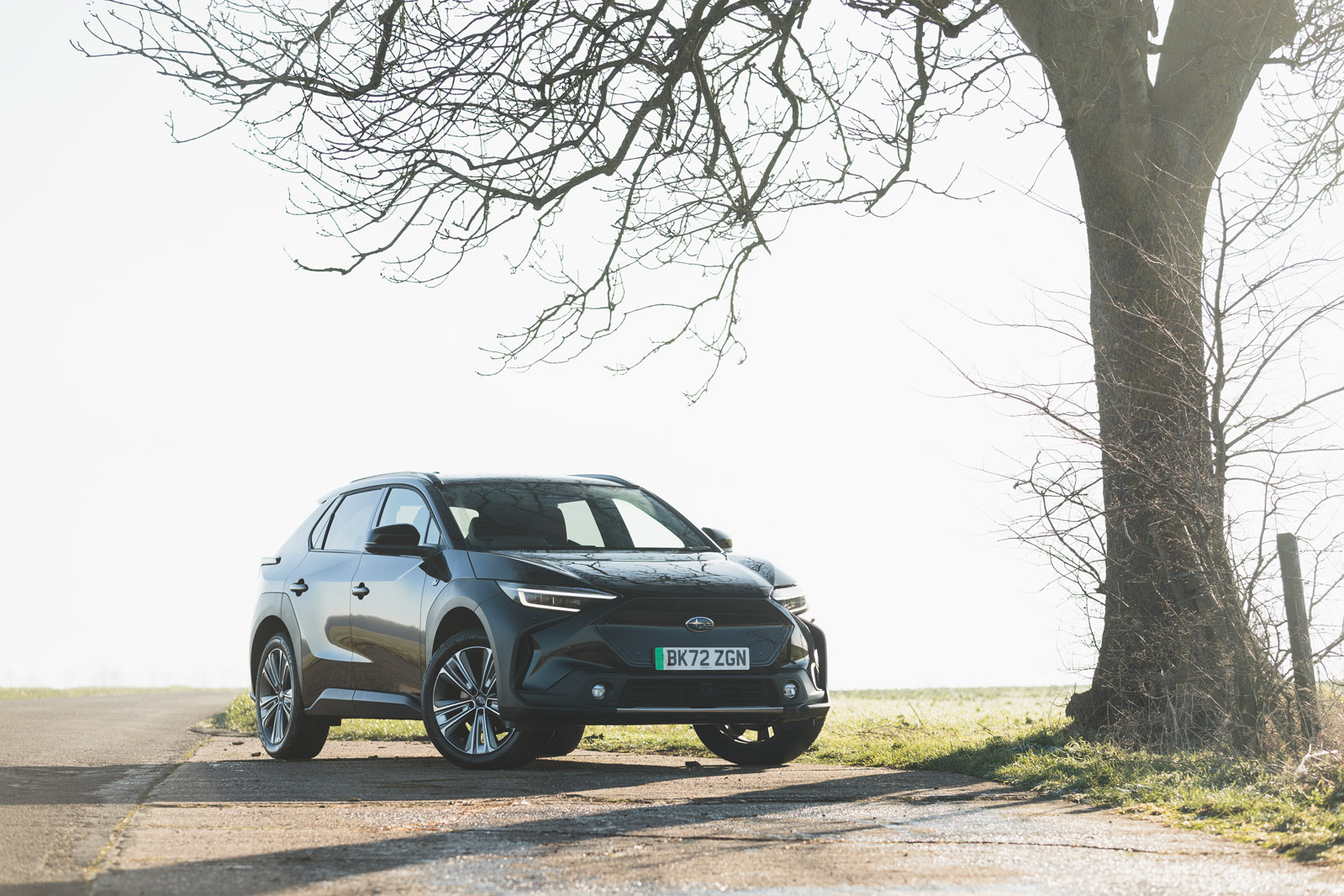There’s a dearth of colour about the Solterra’s cabin. Grey plastics of quite widely differing grains present themselves as you get in, from the upper dashboard to the lower door consoles. While lighter, slightly richer grey textiles are used to add a more tactile finish to the fascia, and there’s synthetic leather upholstery for the seats, the expensive ambience that those materials pursue isn’t successfully created at all.
The Solterra’s feels like a slightly drab, oddly serious driving environment. The stretches of piano black trim on the centre console and a few chrome trims offer limited visual appeal, so you’re left to focus on the cheaper-looking mouldings, around the raised instrument pod and for the interior door release pulls especially, and then wonder where exactly this might look like a £50,000 car.
In terms of enhancing perceived quality, the secondary controls do better. Big, chunky-feeling column stalks and a good-sized rotary drive selector are reassuringly tactile. That there are permanent physical buttons for heater temperature, drive mode selection, stability control deactivation and one-pedal driving is to be applauded, even if the philosophy makes for a crowded steering boss.
But the car’s instruments are rendered clearly, it offers plenty of useful cabin storage and the controls are intuitive enough to use – assuming you can get on with what is, at the very least to begin with, a strange-feeling driving position.
Very much in the modern Peugeot mould, the Solterra has a high-set driver’s seat and a small-rimmed, low-sprouting steering wheel. The column does adjust – but it’s obviously intended to be set low to leave a clear line of sight to the instruments over the top of the rim. Finding such a small steering wheel in a car this size certainly feels odd. While some testers couldn’t adopt a driving position they liked and which also granted them clear sight of the digital instruments, others did with practice.
Second-row passenger space is sufficient for adults of average height to travel in comfort, if not quite up to Skoda Enyaq iV or Tesla Model Y levels, and there is fairly generous knee room in particular but slightly restricted head room.
Boot space is likewise a little below the class best. The 60/40-split folding back seats allow easy expandability, although the back seats don’t slide. The boot itself has a wide opening, but it’s a little shallow under the load bay cover, and its outright volume is affected by the steeply raked rear window.
Multimedia system
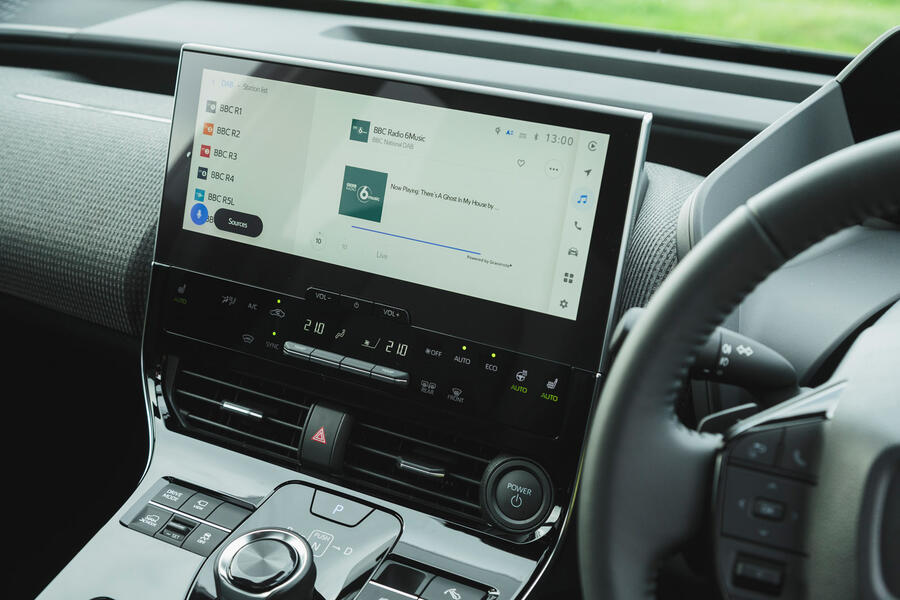
All Solterras get a 12.3in touchscreen infotainment system as standard with factory navigation and wireless Apple CarPlay (Android Auto is wired). If you stump up for Touring trim, your audio system is upgraded to a nine-speaker Harman Kardon hi-fi, but the premium unit’s quality isn’t anything special.
The infotainment system has buttons for power and volume, but otherwise it’s operated entirely via the screen. It’s Toyota’s latest system, and it’s fairly easy to navigate thanks to a column of menu shortcuts on the driver’s side of the screen, but a cursor controller, either on the steering wheel or the centre console, would certainly be welcome.
Some of the system’s menu screens look sparse, possibly because Subaru doesn’t offer as much connected functionality as an equivalent Toyota would. The navigation system is easy to program and clearly displayed, though. It’s a little annoying that the trip computer doesn’t give a long-term average of energy consumption, instead dividing it into daily chunks.


